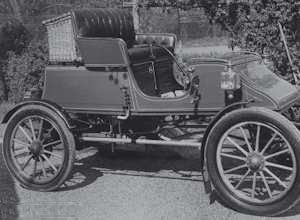Asteam-powered car seems anachronistic today, but when identical twins F. E. and F. O. Stanley began making them in 1897, it was the most proven motive technology around. Early Stanley cars featured a tubular chassis frame with a light, wooden buggy body.
The vertical boiler, under the double seat, at first featured copper fire tubes, with a vapourizing gasoline burner underneath. Drive went from the engine crankshaft to a rear-mounted differential, by chain. The design was a success and soon the company was bought by a business consortium for $250,000.

- YEAR REVEALED 1899
- PLACE OF ORIGIN Vienna, Austria
- HISTORICAL STATUS production car
- ENGINE electric motors and also gas-electric hybrid
- MAXIMUM POWER unknown
- LAYOUT wheel-mounted electric motors driving the front wheels; rear-mounted engine powering electric motors in all wheels
- BODYWORK two-or four-seater open tourer
- TOP SPEED unknown
- NUMBER BUILT unknown
But the new owners lacked the Stanleys’ touch, and the brothers bought their old factory back in 1901 for just $20,000. They immediately put an improved model, the definitive Stanley Steamer, into production. It featured a new, horizontally mounted engine, geared direct to the back axle.
And the boiler was later shifted to the front. The Steamer’s finest hour came in 1906, when Fred Marriott drove a special one across Daytona Beach, Florida, at 127.659mph (205.447kph)-still the longest-standing unbroken record for steam-powered cars, over a century.